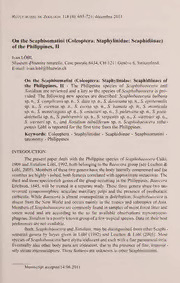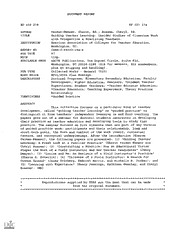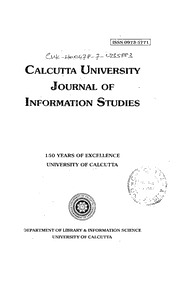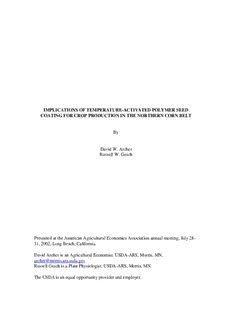
By David W. Archer Russell W. Gesch PDF
Preview By David W. Archer Russell W. Gesch
The World’s Largest Open Access Agricultural & Applied Economics Digital Library This document is discoverable and free to researchers across the globe due to the work of AgEcon Search. Help ensure our sustainability. Give to AgE con Search AgEcon Search http://ageconsearch.umn.edu aesearch@umn.edu Papers downloaded from AgEcon Search may be used for non-commercial purposes and personal study only. No other use, including posting to another Internet site, is permitted without permission from the copyright owner (not AgEcon Search), or as allowed under the provisions of Fair Use, U.S. Copyright Act, Title 17 U.S.C. IMPLICATIONS OF TEMPERATURE-ACTIVATED POLYMER SEED COATING FOR CROP PRODUCTION IN THE NORTHERN CORN BELT By David W. Archer Russell W. Gesch Presented at the American Agricultural Economics Association annual meeting, July 28- 31, 2002, Long Beach, California. David Archer is an Agricultural Economist, USDA-ARS, Morris, MN, archer@morris.ars.usda.gov Russell Gesch is a Plant Physiologist, USDA-ARS, Morris, MN. The USDA is an equal opportunity provider and employer. IMPLICATIONS OF TEMPERATURE-ACTIVATED POLYMER SEED COATING FOR CROP PRODUCTION IN THE NORTHERN CORN BELT ABSTRACT The value of an innovative new seed technology is evaluated in a discrete stochastic programming framework for a representative farm in the northern Corn Belt. Temperature-activated polymer coated seed has the potential to increase net returns by reducing yield loss due to delayed planting and by increasing the use of longer season varieties. A biophysical simulation model was used to estimate the impact of polymer coated seed on corn and soybean yields and on field day availability for five planting periods, two crop varieties and two tillage systems on two different soils under varying weather conditions. Results show that polymer coated seed increases net returns in corn by $2.50-$3.65 per acre and in soybeans by $4.50-$9.70 per acre. Keywords: mathematical programming, biophysical simulation, corn, soybean IMPLICATIONS OF TEMPERATURE-ACTIVATED POLYMER SEED COATING FOR CROP PRODUCTION IN THE NORTHERN CORN BELT INTRODUCTION A recent technological innovation has the potential to significantly change the risks faced by farmers in planting their crops. A temperature-activated polymer seed coating has been developed which delays the exposure of seed to the soil until the soil reaches a specific temperature. When the soil reaches the critical temperature, the coating allows the seed to be exposed to the soil, and germination can occur. Polymer coated seed has several potential uses. Dillon et al. (2001) investigated the potential value of polymer coated seed in variable rate planting date applications. The technology also has the potential to improve planting options in double cropping (McCoy et al., 2000). Polymer coated seed has the potential to extend the planting window, reducing potential yield losses due to late planting and allowing equipment costs to be spread over more acres. Polymer coated seed also may allow producers to plant longer season varieties, increasing potential yields. These factors are particularly important on the northern edge of the Corn Belt, where a short growing season leads to significant yield reduction when seeding is delayed beyond the optimum period and where cool, wet spring conditions often hamper seeding operations. Cool, wet spring conditions are also a significant barrier to the adoption of no-till in the northern Corn Belt. The potential for polymer coated seed to reduce this barrier has generated considerable interest (Grooms, 2001). Initial field research has shown that the polymer coating may allow corn and soybeans to be planted as much as four weeks early without a reduction in yield (Gesch et al., 2001). 1 The primary objective of this analysis is to estimate the value of polymer coated seed in the northern Corn Belt. A secondary objective is to identify the potential for the new technology to lead to changes in cropping practices in this region. ANALYTICAL METHOD The analytical approach in this analysis is to formulate production decisions in a discrete stochastic programming (DSP) model for a representative farm in Stevens County, Minnesota. The farmer’s objective is to maximize expected net returns given a production technology set and subject to uncertain weather conditions. The analysis proceeds as follows. First, crop production alternatives are defined and crop yields are estimated for production alternatives. Second, days available for field work are generated and used to derive estimates of stochastic parameters for the economic model. Third, the economic model for a representative farm is constructed and used to estimate the impact of polymer seed technology at the farm level. Crop Production Crop yields may be affected by weather conditions in the northern Corn Belt in several ways. Wet conditions in the spring may cause planting to be delayed, shortening the growing season and reducing crop yields. However, planting too early increases the risk of frost damage for early emerging crops, and prolonged cool, wet conditions after planting may cause seed to deteriorate in the soil. Temperature-activated polymer coated seed may allow earlier planting while reducing the risk that seed will deteriorate in the soil, and maximizing use of the growing season. However, if soil temperatures are warm 2 early in the spring, polymer coated seed may not protect against frost damage to early emerging crops. To capture these effects, the EPIC biophysical simulation model (Sharpley and Williams, 1990) was used to estimate the impact of polymer coated seed on corn and soybean yields under varying weather conditions. Yields were simulated for each crop with weekly planting dates ranging from April 3 to May 22 for corn (8 weeks) and from April 3 to June 5 for soybeans (10 weeks). Planting dates were entered in the model so that planting actually occurs as soon as the soil temperature reaches 50° F (10° C) after the entered date. This mimics the behavior of seed with a polymer coating that becomes permeable at 50° F. Yields were simulated for three different maturity classes for each crop denoted early, normal, and late. Yields were also simulated under two different tillage systems: conventional tillage (CT) and no-till (NT), and for two different soil types: Aastad clay loam and Parnell silty clay loam. EPIC simulations relied on 51 years of historical daily weather observations from the University of Minnesota West Central Research and Outreach Center. Missing weather observations were replaced using values generated by EPIC. Although yield observations for the specific treatments were not available, simulated yield levels were compared against historical county average yields for Stevens County, Minnesota (USDA-NASS) for general consistency with observed yield levels and responses to weather variability. Simulated yields appeared to be consistent with historical yields. Weekly crop yields were averaged for each of five 2-week periods to reduce the number of stages included in the DSP model to a tractable level. The five planting 3 periods used in the DSP model were: March 31-April 13, April 14-28, April 29-May 12, May 13-26, and May 27-June 9. Field Day Estimation EPIC-simulated soil moisture and temperature values were also used to estimate the impact of varying weather conditions on field day availability. A modified version of the procedure described by Dillon et al. (1989) was used to determine field day availability. The criteria used to identify a nonworking day were: 1) if it rained 0.15 inches (0.38 cm) or more on a given day, that day was not considered a field day, 2) if soil moisture in the top 3.9 inches (10 cm) was greater than 80 percent of available water capacity for CT or greater than 90 percent of available water capacity for NT, that day was not considered a field day, and 3) if soil temperature was at or below 32° F (0° C) at any depth, that day was not considered a field day. The total number of field days available for each 2-week planting period were treated as stochastic in the DSP model. Following Etyang et al. (1998), the farmer chooses planting activities based on the realization of available days in the current period plus the knowledge of the distributions, but not the realizations, of available days in future periods. The distributions were approximated by a 2-point Gaussian quadrature (GQ) estimate, which exactly matches the first three moments of the simulated distribution of available field days. The 2-point GQ estimate is used to retain as much information on the underlying distribution as possible with the fewest number of points. This is important to reduce the “curse of dimensionality” problem in the DSP model. With five planting periods there are 25 = 32 states of nature in our model. 4 The distribution of available field days differed for the corn and soybean simulations, so the GQ estimates for each crop would provide different estimates of the states of nature. These could not be handled simultaneously in the DSP model. It was decided to use the distribution from the corn simulations only, which generally had the most limiting field day availability. Field day distributions also differed depending on tillage system and soil type. However, the tillage system decision is generally a longer term decision made for the entire farm, so only one tillage distribution is used for making within-season cropping decisions. Also, assuming both soil types occur in all fields, only one soil type distribution is relevant, with the most limiting soil type determining field day availability. As Etyang et al. (1998) indicate, the distribution of available field days in one period may be related to the realized number of field days in previous periods. To allow for this possibility, the number of available field days in each period was regressed on the number of field days in preceding periods down to period one. Results from the regressions are given in Table 1. The number of field days available in period 5 (D ) was 5 not related to the number of field days in any previous period for any tillage system or soil type. The number of field days in period 4 (D ) was not related to the number of 4 field days in any previous periods for conventional tillage on either soil type, and the number of field days in period 3 (D ) was not related to the number of field days in any 3 previous periods for conventional tillage on an Aastad soil. The number of available field days in most other periods showed a positive significant relationship with the previous period indicating a tendency for conditions to persist. The results agree with the perception that available field days are more persistent early in the season when it is cool 5 and takes longer for the soil to dry. Also, the results agree with the perception that available field days are more persistent under no-tillage than under conventional tillage, again because it takes longer for the soil to dry. The results for period 3 (D ) under 3 conventional tillage and on a Parnell soil were unusual, in that the coefficients for the previous two periods were both significant and the coefficient on the 2-period lagged coefficient was negative. The states of nature for the DSP model were estimated from the distributions of available field days as a 2-point GQ approximation following the procedure outlined by Preckel and DeVuyst (1992). The estimates are given in Table 2. For the first period, there were two states of nature with the probabilities of the two states and the number of available field days in the two states estimated directly from the distribution of available field days. For subsequent periods the estimates of available field days and associated probabilities were obtained differently depending on whether the number of field days in the period were significantly related to the number of field days in previous periods. If the number of field days was significantly related to the number of field days in the previous period, the distribution of the residuals from the regression were used to estimate a 2-point distributions of the residuals. These points were then used in the regression equation along with the number of field days in the previous period to obtain estimates of the field days in the current period. For example, the number of days in period 2 on an Aastad soil under conventional tillage depends on the number of days in the previous period. Suppose the realization in period 1 was point 2, so there were 11.07 days available for field work. If the realization in period 2 was point 1, then the number of field days available in period 2 would be D = 2.393 + 0.745*(11.07) – 2.80 = 7.84. 2 6 If the number of field days was not related to the number of field days in the previous period, the probability and field day estimates were estimated directly from the distribution of field days. In some cases the 2-point GQ approximation produced negative estimates of available field days. To obtain 2-point estimates that were feasible, while retaining as much information on the observed distribution as possible, it was necessary to relax the condition that the 2-point distribution exactly match the first three moments of the sample. A simple optimization model was constructed to provide a 2-point estimate that exactly matched the first two moments of the original distribution, and minimized the absolute deviation from the third moment, while requiring the estimated number of field days to be nonnegative. Economic Model The representative farm was assumed to grow corn and soybeans in rotation, with 50 percent of the acres in corn and 50 percent of the acres in soybeans in any one year. The farm was assumed to have 625 acres (253 ha.) of cropland, which is the average size for cropland farms in Stevens County, Minnesota (USDA-NASS, 1997). The crops could be grown under either conventional tillage (CT) or no-till (NT). The effect of soil type on the potential use of polymer coated seed was analyzed by including two soil types that are commonly found in the area: Aastad clay loam and Parnell silty clay loam. The producer could choose from three different maturity classes for each crop: early, normal and late, and crops could be planted in any of five planting periods. The economic model was formulated as a whole-farm discrete stochastic programming optimization model (Cocks, 1968). The DSP model was chosen over the 7
Description:The list of books you might like

The 48 Laws of Power

Can’t Hurt Me: Master Your Mind and Defy the Odds

Believe Me

As Good as Dead

Il cinema americano contemporaneo
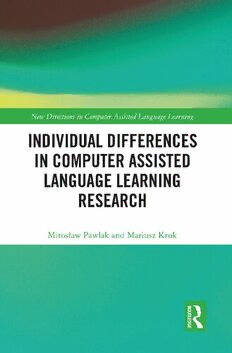
Individual Differences in Computer Assisted Language Learning Research
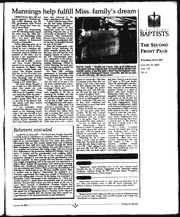
The Baptist Record Jan. 25. 2007

The Frailty Myth: Redefining the Physical Potential of Women and Girls
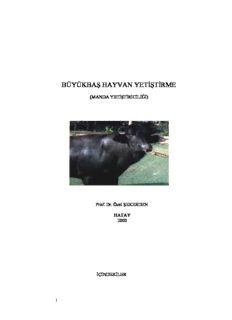
büyükbaş hayvan yetiştirme
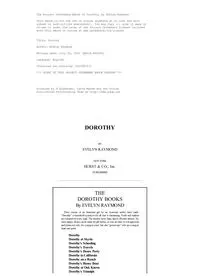
Dorothy by Evelyn Raymond
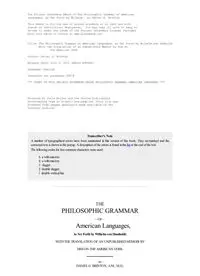
The Philosophic Grammar of American Languages by Daniel G Brinton

avoured Consumption in The Bloody Banquet
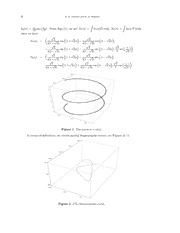
Special Smarandache Curves According to Bishop Frame in Euclidean Spacetime
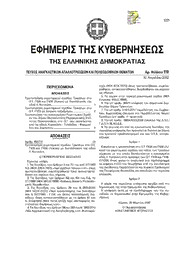
Greek Government Gazette: Part 10, 2012 no. 119
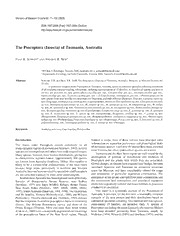
The Psocoptera (Insecta) of Tasmania, Australia
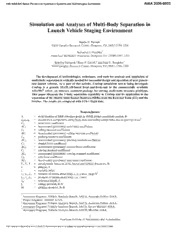
NASA Technical Reports Server (NTRS) 20060055387: Simulation and Analyses of Multi-Body Separation in Launch Vehicle Staging Environment
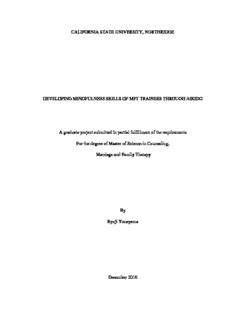
CALIFORNIA STATE UNIVERSITY, NORTHRIDGE DEVELOPING MINDFULNESS SKILLS OF MFT ...
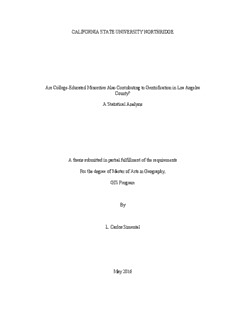
CALIFORNIA STATE UNIVERSITY NORTHRIDGE Are College-Educated Minorities Also ...

CALIFORNIA STATE UNIVERSITY NORTHRIDGE MICROWAVE RECEIVER AMPLIFIER AND ...

